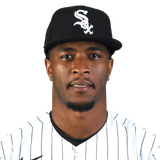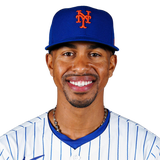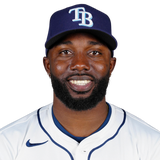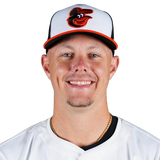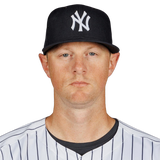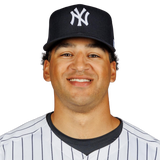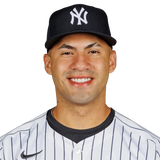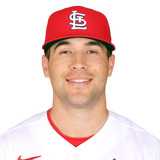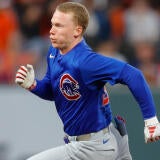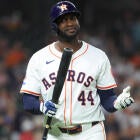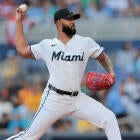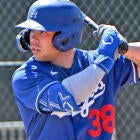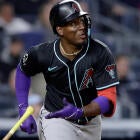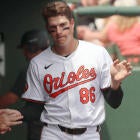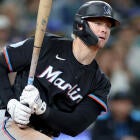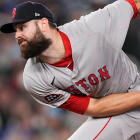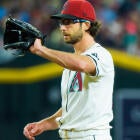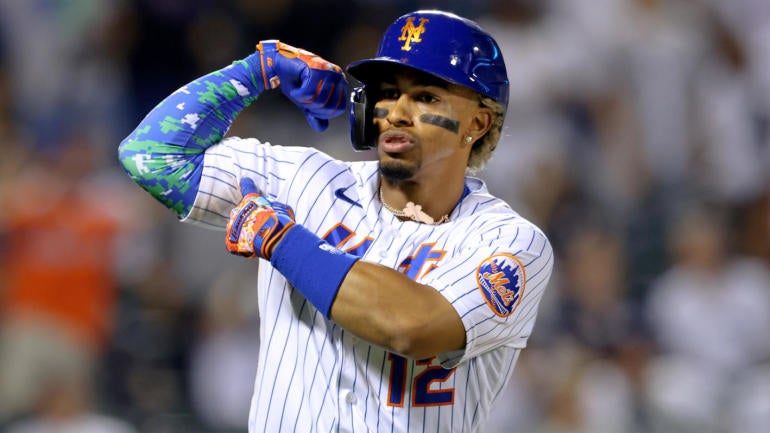
Maybe I'm the idiot for going against the consensus, but for these 11 players, the average draft position (ADP) just doesn't work for me. They're all going ahead of where I rank them, ahead of players who I think are better.
Stolen base desperation plays a part for some of them. I've written about how I'm not going to get caught up in it this year. It's also not clear to me that everyone is clued in to the effect the new ball had on certain players last year.
This list differs from my bust picks by focusing more on draft inefficiencies than downside potential, but there's a small amount of crossover between the two. Also, note that these ADP values come from FantasyPros, which brings together the data from several different sites and deals exclusively with Rotisserie leagues.
More than anything, it's a question of what makes Tim Anderson worth the upcharge at so loaded a position. I've always thought he gets more credit as a base-stealer than he deserves, having only once swiped 20 bags in a season, and it's not middle-of-the-order power he provides either. Batting average is his standout category, but even that's built on an outlier BABIP that's liable to let him down one of these years. All in all, I'd like to see better counting stats from a fourth-round player and would prefer to draft Corey Seager 30 spots later.
| ||||||||
What's weird about Francisco Lindor's ADP is that it doesn't seem to acknowledge 2021 happened. That might make sense at a position with few upside plays, but at shortstop, you can afford to be finicky. Some attribute his 2021 struggles to switching leagues and playing in New York for the first time, but I think it's just as likely that his swing is ill-suited for the new ball. He began selling out for power at the start of the juiced ball era in 2017, hitting more fly balls than ever before, and his batting average may continue to suffer if he sticks with that approach. Why take the risk with so many stud shortstops available later?
| ||||||||
The common thread for these first three players is that people are willing to pay up for a modest number of stolen bases. Randy Arozarena's 20 were the most between them last year, but considering he also failed on 10 of his attempts, it's unclear whether he'll be given the green light as much moving forward. His other contributions are even more questionable. Statcast had him with a .222 xBA and .369 xSLG, making him perhaps the single biggest overachiever among hitters. If you aren't fixated on speed, you can find steadier outfielders who'll contribute far more in the other counting stats. Someone like Bryan Reynolds goes 25 picks later.
| ||||||||
How does a hitter as limited as Ryan Mountcastle go as early as he does? It wouldn't make sense even if you took his 33 homers last year at face value, and of course, you shouldn't. Two-thirds of them came at Camden Yards, where the Orioles are moving back the left field fence 30 feet this year. Meanwhile, Mountcastle is strikeout-prone with no on-base skills or base-stealing ability to speak of. Seeing as his supporting cast also limits his run and RBI potential, his profile is entirely dependent on power production he's unlikely to provide. Give me any of Kyle Schwarber, Josh Bell, C.J. Cron or Joey Votto instead.
| ||||||||
I've speculated as to the effect the new "deadened" baseball had on Francisco Lindor, but it's even clearer in DJ LeMahieu's case. He wasn't anyone's idea of a power threat, remember, until he joined the Yankees in 2019, when the juiced ball was at its juciest. He so infrequently puts the ball in the air that he needs to make it count when he does, and if the ball isn't carrying the same way, it lengthens the odds. I wouldn't rule out him rebounding some in batting average, but what will the counting stats look like? In the past, you could at least trust him to score a bunch of runs, but now that he's transitioning to a super utility role, maybe not.
| ||||||||
The story for Jared Walsh is similar to Ryan Mountcastle. With minimal contact and on-base skills, his expectations are largely tied to a power profile that's questionable at best given his middling exit velocities, and he has the added misfortune of a suboptimal launch angle. Statcast pegged him for a .257 batting average and .436 slugging percentage last year, which were well below his actual .277 and .509 marks. He may turn out to be an expensive Eric Hosmer.
| ||||||||
Of all the possible victims of the new baseball last year, few were as decisive as Trent Grisham, whose 38th percentile average exit velocity makes him precisely the sort of player who doesn't impact the ball hard enough to get it over the fence with regularity anymore. By the end of last season, he was bringing so little to the table offensively that the Padres saw fit to sit him against left-handed pitchers, and he'll have a hard time keeping up in the counting stats if it continues this year. The chance for 15-20 stolen bases has people presuming the best when the worst is more likely.
| ||||||||
The desperation at third base I can appreciate, and given that few last year were as high on Ke'Bryan Hayes as I was, you'd think I'd be along for the ride this year as well. But he was pretty terrible and offered little reason for optimism in the underlying data. Some will blame the wrist injury he suffered on the second day of the season for sapping him of his power, but why are we weighing the 24 games he played in 2020 so heavily? It's not like he was some slugger in the minors. It's wild to me that he's drafted at about the same point he was last year, but hey, I guess he's not a total zero for steals.
| ||||||||
Am I going to say the new ball has wrecked Gleyber Torres as well? It would be clearer if his 2020 wasn't also a disaster, but since his batted-ball profile has hardly changed from when he hit 38 homers in 2019, I don't know what else to put it on. His hard-hit rate has always been lackluster, but it didn't seem to a matter at a time when seemingly everything hit in the air had a chance to go over the fence (as was the state of things in 2019). It's also not clear what he brings to the table other than power, his 14 steals last year being a total outlier. At shortstop especially, there isn't a need for this sort of wish casting.
| ||||||||
There comes a point when a player's body of work counts for more than his one-time prospect standing. Maybe we're not there yet with Dylan Carlson, who was technically a rookie last year despite debuting in 2020, but I've seen little reason for optimism. His hard-hit rate was in the ninth percentile last year, down there with J.P. Crawford and Luis Arraez, and modest though his numbers were, his .247 xBA and .407 xSLG suggest he actually overachieved. He's not even providing the steals we had hoped for, having so far swiped three bases in 184 games. I'd take Robbie Grossman over him, frankly, but if it's upside you're after, Jo Adell is available 60 picks later.
| ||||||||
It's less the raw ADP that concerns me than where Tyler Stepehenson is drafted relative to other catchers. The presumption seems to be that his part-time numbers will translate to full-time duty when his batted-ball profile doesn't really support it. The power in particular seems like a small-sample fluke. He's in the bottom third of the league in both average exit velocity and hard-hit rate, and he doesn't elevate like a power hitter either. He should reach base at a decent clip, but if I'm shooting for upside after the stud catchers are gone, I like Keibert Ruiz or even Mitch Garver more.
|
![[object Object] Logo](https://sportshub.cbsistatic.com/i/2020/04/22/e9ceb731-8b3f-4c60-98fe-090ab66a2997/screen-shot-2020-04-22-at-11-04-56-am.png)


